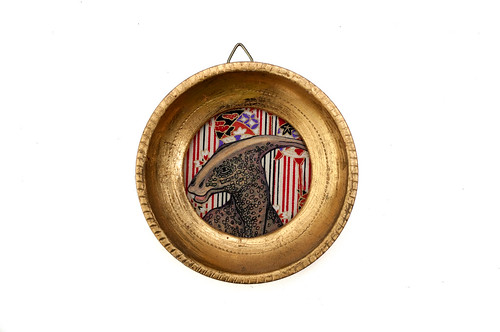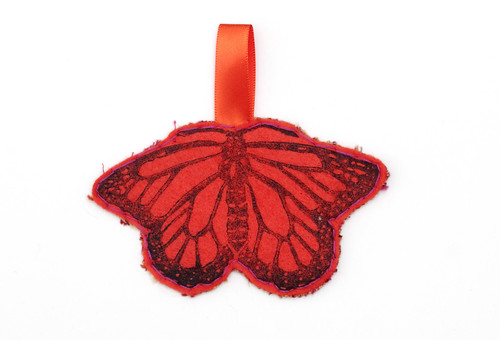 {image 'Robot Reading' by CarlosNCT} The themes of my reading lately seem to be mass consumerism, war, environmental degradation (see mass consumerism), people stranded waiting for their boat to come in and robots. I don't know why.
{image 'Robot Reading' by CarlosNCT} The themes of my reading lately seem to be mass consumerism, war, environmental degradation (see mass consumerism), people stranded waiting for their boat to come in and robots. I don't know why.Also, I've left this too long and these books aren't as fresh in my mind, but here goes nothing.
36. White Noise by Don Delillo. I got the 25th Anniversary Edition (by Deluxe Classics - incidentally, one with a beautifully illustrated cover and elegant design), which I mention because it does stand up 25 years later. It does seem farsighted (with the exception perhaps of the state of air travel, which Delillo did not foresee) - our world is full of more and more noise. It's a great novel, though hard to categorize. Part academic satire, send up of consumerist society, Big Pharma, television, and government, part environmental warning, both poking fun at the modern 'blended' family while simultaneously gently portraying the relationships and love there, it is also about death, and our obsessions and fears. It follows a year of Prof. Jack Gladney's life (Chair, and inventor of 'Hitler Studies'! at The-College-on-the-Hill, despite ignorance of German). He's on his fourth wive Babette - who teaches breathing in church basements and has a morbid fear of death - with whom he's raising four of their various children and this and previous relationships. Everything from the Airborne Toxic Event to the mysterious drug Dylar manages to be both entertaining and provide insightful commentary on the state of our world. It is a great read.
37. the stone gods by Janette Winterson Before I read David Mitchell's The Cloud Atlas I would have said I had read nothing like it, but now I see parallels in the stone gods. Both are ultimately about how we use and use and use the earth's resources and each other. Both are set in multiple times and places, linked by a manuscript, including the future, and the south Pacific of two centuries past. Both involve robots and the distinctions between natural and created lifeforms. I think if I hadn't read The Cloud Atlas, I would be more impressed with the stone gods, but it is nonetheless an excellent novel, and one of the best I've seen from Winterson. Read it. There are love stories, explorers, space travel - with pirates, robots, literature, Robinson Crusoe, dinosaurs, Easter Island, dystopian future England, woven into an elegantly structured and thought-provoking cautionary tale. She clearly loves stories, but is concerned here with nothing less than the fate of the planet. (And I for one, appreciate that she bothers to be careful and clever with her planetary science).
38. In search of the English by Doris Lessing Lessing provides us with her memoir of moving to post-war England as a young, single mother, and trying to make a go, and to fit in and survive in a working-class neighbourhood. Lessing has a sharp mind, self-deprecating sense of humour, and can - and did - make even a memoir about her cats riveting. This book is no exception.
39. R.U.R. (Rossum's Universal Robots) by Karel Čapek Karel Čapek, Czech playwright, introduced the world to the word 'robot' in 1921 with this play, in which he imagines a world where robots have been invented to relieve man of labour. They are grown on a factory on a remote island, and appear to be just like people, but lack emotions. Helena, daughter of the President of some industrialized nation, visits the island with its small group of men and one woman (manager, engineer, physiologist, psychologist, managing director, clerk and maid) with the view of freeing the robots. She is unable to incite rebellion, as they have no emotions, and she falls for Domin, the General Manager. The play continues years further into the future when the robots have spread around the globe, to do all labour, and even work as soldiers, and the creation of 'national robots' foments more war. Human births decline (presumably inspiration for Children of Men). Eventually the now universal robots - slaves- of course, do rebel, and our human characters may be the last of their kind. However, the robots can do everything but reproduce on their own... This is a fascinating play - it is as much about industrialization and the dangers of nationalism (viewed by a far-sighted Czech in the 1920s, known for his fearless campaigns against both Nazism and Communism) as much as its science fiction subject. But it also hits upon the question of what is human, and under what criteria would a machine match a human.
40. Pictor's Metamorphoses by Hermann Hesse This is an odd collection of many 'sort of fairytales' spanning Hesse's entire life. There is, of course, mysticism, Germanic dwarfs, mermen, spirits, metamorphoses and also Mary. I was disappointed that the illustrations by the author, promised in the introduction, did not appear in my translation. I tend to believe that if an author wrote text and intended it to be part of an illustrated whole, that the illustrations are part of the whole. An interesting and unexpected read.
41. The Chess Machine by Robert Löhr, translated from German by Anthea Bell This is a sort of 'intellectual beach book' like the stories of Arturo Perez-Reverte. The Chess Machine, for those of you who aren't history of science, engineering and computing nerds, was an actual automaton, presented by Baron Wolfgang von Kempelen at the Austrian court in Vienna in 1770 - 'The Mechanical Turk'. Except, of course, it was a hoax. The fearsome Turk purported to play chess - invincibly of course. At the time automatons were popular and his rivals produced a mechanized statue which could write and a sort of robot duck (which waddled, ate and well, defecated) and the like. Kempelen however, promised to wow the court, and he succeed with his Turk, a machine which allegedly could think. The novel centres around Tibor, a devout war veteran and dwarf, making his living through chess, whom Kempelen rescues from a Venetian prison and recruits as the hidden brains of the Turk, hidden behind the gears and showy machinery. Reviewers seem to have taken this novel more seriously than I - citing 'psychological depth' and 'period detail'. I enjoyed the novel, but wonder whether, for instance the chapter wherein Tibor meets Mesmer and is 'magnetized' and enjoys a threesome with two masked noblewomen using Classical monikers, or the unlikely infatuation of the lusty Hungarian Baroness with the automaton, or the rather ham-fisted recurring image of plucked eyeballs, constitute 'psychological depth' or 'period detail'. However, it's certainly entertaining, and it has some basis in actual events.
42. The Exquisite Book by Julia Rothman, Jenny Volvovski and Matt Lamothe. The Exquisite Corpse, of course, is the surrealist game wherein a single body is drawn by three artists in three parts, who can only see a small portion of what came before. In The Exquisite Book the creators have enlisted a veritable who's who of contemporary art and illustration to create a whole book of connecting illustrations, in a series of themes, each continuing at least a horizon line into the next. Some artists blend virtually seamlessly, some pick up themes and subjects, some differ radically. The book is, of course, beautiful. It contains a foreword by the ubiquitous Dave Eggers, who by the way, can draw. There are also questions with and biographies of the artists. I'll enjoy returning to this often.
43. The Thousand Autumns of Jacob De Zoet by David Mitchell There's a reason the New York Times Book Review called Mitchell a genius. While I can intuit the sort of mind which could create such diverse and excellent novels as The Cloud Atlas, Black Swan Green and The Thousand Autumns of Jacob De Zoet each is so distinct it seems he can write whatever he sets his mind to. There are themes I can recognize - bullying, integrity, slavery, drugging people into complacency, cultural clashes, exploration - but each novel is unique. The Thousand Autumns of Jacob De Zoet is set in 1799 in the Dejima trading outpost of the Dutch East Indies company, next to Nagasaki Japan. Jacob de Zoet is a devout, resourceful if overly trusting young clerk, who enlisted with the VOC to try to earn enough money to satisfy the father of his fiancée and win her hand with 5 long years in the far east. He has been sent to clean up the rampant fraud on the tiny island, where the only foreigners allowed entry to the Shogun's Japan are essentially prisoner - allowed no further into the country, and stranded until they serve their terms. Jacob learns the price of his integrity. His life also changes when he meets the stunning, but disfigured midwife Orito Aibagawa, daughter of a respected samurai doctor, and student of the Dutch doctor Marinus. The book never ceased to amaze - somehow making life on Dejima, and the wider Japan under the shogunate, as well as a staggering plot very real, while weaving in many further stories. Wow.
{Series so far: books read, more books read, books read, books read continues, more books read, I, II, III, IV, V, VI, VII, VIII, IX, X, XI, XII, XIII, XIV, XV, XVI, XVII, XVIII,XIX, XX, XXI, XXII, XXIII XXIV, XXV, XXVI, XXVII, XXVIII, XXIX, XXX, XXXI, XXXII, XXXIII, XXXIV, XXXV, XXXVI, XXXVII, XXXVIII, XXXIX, XL,XLI}






















































 {image: painting by Tamara de Lempicka}
{image: painting by Tamara de Lempicka}

